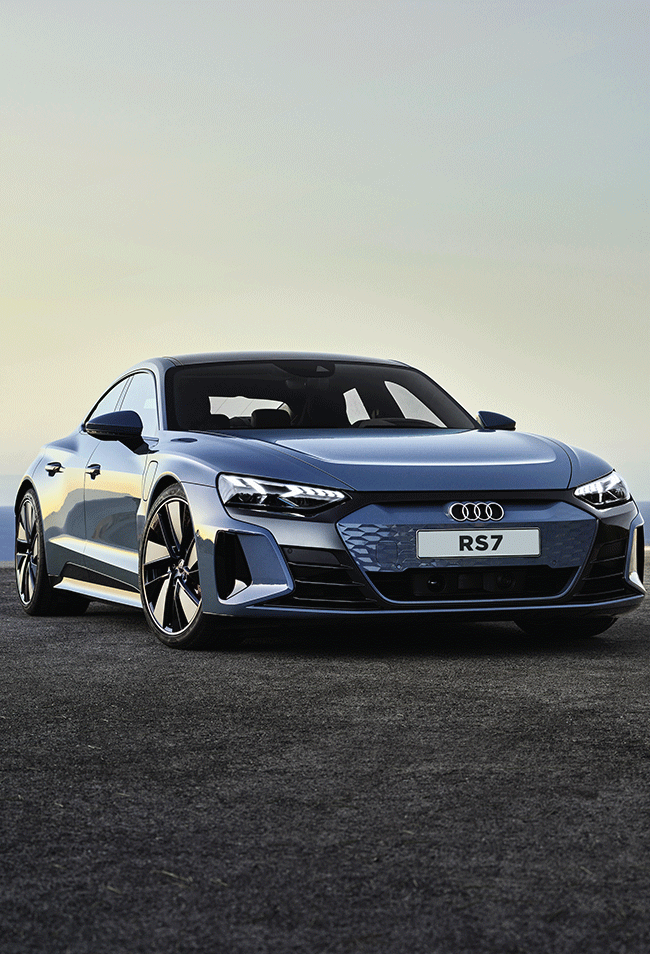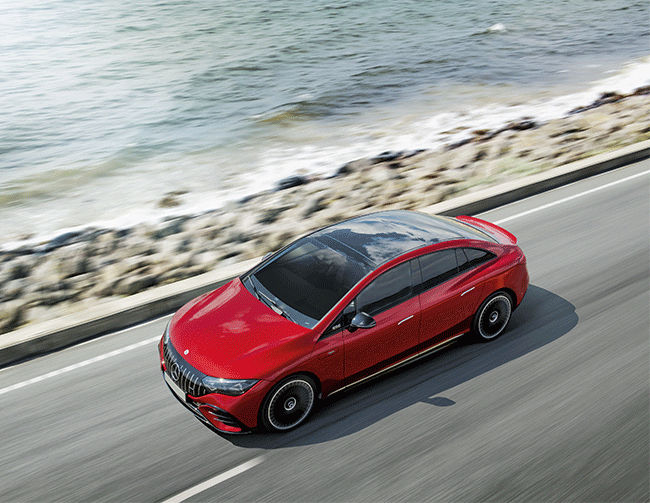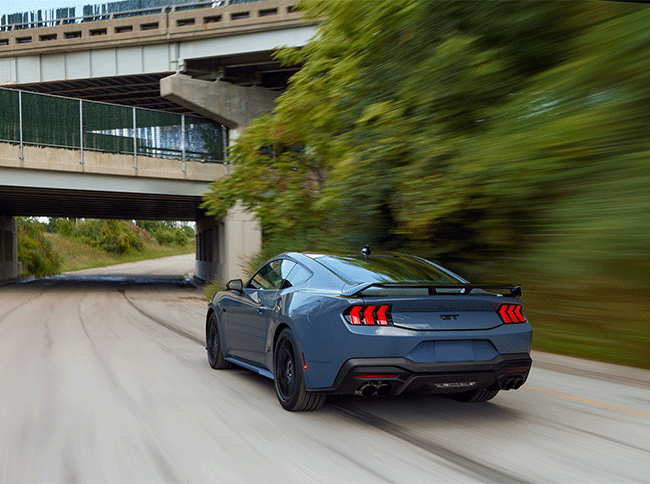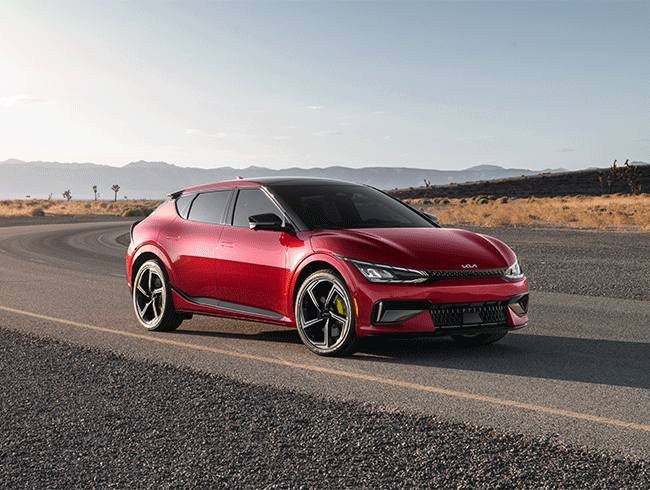Back in 1997 when Toyota gave the world the Prius, it looked like electric propulsion would usher in a new era of deadly dull. Words such as mindful, considered, disciplined and responsible peppered ad campaigns. It was to be the Age of the Uninteresting. Fast forward (and no phrase is quite as apt) 26 years later, and things turned out very differently. At the end of February, SA hosted its first Formula E race in Cape Town… The ‘dull’ electric pioneers have fallen by the wayside, replaced by sexier, faster, sportier siblings. Electric in 2023 has become the byword for quick, and conventionally propelled cars have had to up their game in response. Ironic then, that as 2023 gets into full swing, there’s never been a better time to buy a fast car.
From the European side, head of the pack in the electric stakes is Audi, which has audaciously hit SA with a raft of crackers, including the e-tron, e-tron GT, RS e-tron GT and, soon, the mad-as-vodka-milkshakes Audi SQ8 e-tron. The last is a blister pack of antidepressants – three electric motors producing 370 kW and 973 Nm for a 0–100 km/h time of 4.5 seconds. As a reference, the fire-breathing V8 RS Q8 – essentially a Lamborghini Urus under the skin – manages the ton in 3.8 seconds. All that acceleration with no noise imprints itself vividly on the cortex.
More generally, Audi is a master of turning fossil-fuel combustion into memorable experiences. No finer driver’s car exists than the all-conquering RS6 Avant – a wagon, cruise missile, weekend warrior and all-round decent urban cruiser. And this year Audi has given it (as well as the V8 RS7 Sportback) the Performance treatment, which essentially means more power and more noise. Peak outputs rise to 463 kW and 850 Nm, enough to rocket both to 100 km/h in 3.4 seconds. And expect to see more great things in the near future for the marque’s Performance wing, including chip and design upgrades to RS3, RS4 and RS5.
Close behind Audi, BMW is also playing with crackers, Munich’s bottle rocket being the new-generation M2, with a gloriously traditional 3.0-litre straight-6 petrol engine under the bonnet (albeit turbocharged), good for 338 kW and 550 Nm of torque. And yes, M2, unlike M3 and M4, will only be available with rear-wheel drive, all the better for tail-out shenanigans and deeply satisfying country road power slides. Its release comes none too soon – BMW aficionados have been restless of late, suggesting the company is losing its performance edge, focusing instead on solidly capable yet ultimately disappointing machines. Rear-wheel drive, low weight and a manual gearbox should settle the press gang.
If BMW has gone back to its roots and Audi is focused on RS glory, Mercedes-Benz is taking a multipronged approach to its sports stars. The marque’s traditional emphasis on luxury dovetails neatly with electric’s core offerings – quiet, serene, elegant – while also offering the chance to be insanely quick when needs be. Witness the latest EQS (essentially an electric S-Class). The most potent version at the moment is the AMG 53, ordinarily good for 484 kW and 950 Nm from its twin electric motors. However, pay for the Dynamic Plus package and Merc will bump those numbers up to 560 kW and 1 020 Nm. That’ll turn the already quick luxobarge into one of the world’s fastest limousines, with a 100 km/h sprint time of 3.4 seconds, enough to spill the Veuve Clicquot in the back. Sports car? Definitely. But not as you’ve ever experienced it before.
Further down the pecking order is Stuttgart’s C-Class debutante duo, the C43 and C63, the latter controversially swapping the much-loved V8 for an admittedly ridiculously powerful 2.0-litre turbo unit. How powerful? 500 kW and 1 020 Nm powerful, which includes 150 kW of extra boost from an electric motor. That electric power-on-tap means turbo lag is all but eliminated. All-wheel drive and an uprated electronic suspension system will keep things sweet when the laws of physics and old friend G-force come calling.
There’s more from Benz. The launch of an ‘entry level’ SL is always good news in a price-sensitive market, and the Mercedes-AMG SL 43 should find a welcome audience. Unlike its lustier V8 brothers, it sports a 2.0-litre turbocharged engine, which, Mercedes promises, is quick and efficient.
Less efficient but madly desirable is the other newcomer, AMG’s first performance hybrid, the 620 kW Mercedes-AMG GT 63 S E Performance. The company is rightly proud of its achievement – a combination 4.0-litre V8 biturbo engine and electric motor will rocket the car to 100 km/h in 2.9 seconds, hardly long enough to open your mouth, let alone scream. Every component of the conventional four-door GT has been upgraded to cope with the huge power and torque, from battery to drivetrain to brakes. It’s set to be one of AMG’s most collectible cars, and no surprise to hear the first units have long since been sold.
Talking surprises, Porsche, true to form, has thrown convention out the window with the introduction of the 911 Dakar. Like ska after Vivaldi on the playlist, it’s both a breath of fresh air and totally disruptive. An off-road 911? Nuts. It’s proved hugely successful though, all 2 500 (including a few SA units) expected to sell well before the end of the year. The car is based on the 911 Carrera 4 GTS coupé, using the same 353 kW twin-turbo 3.0-litre, flat-6 petrol engine. It’s much higher, obviously – when the electronic lift system is deployed, it can rise a full 80 mm higher than the standard car. Bonkers and brilliant.
Post-Brexit Britain is having a torrid time of it and Jaguar is feeling the pinch, despite owner Tata standing behind both it and sister brand Land Rover. Jaguar’s problem is that it hasn’t produced a new car since the I-Pace in 2018, which – though innovative – accented an SUV future, rather than one featuring sports cars or limousines. Will it survive? The jury is out, but in the meantime, one last hurrah for the gorgeous F-Type two-seater before being put out to pasture. The 75 and F-Type R 75 special editions get 20-inch alloy wheels and the R and R-Dynamic badges of black and grey instead of the conventional red and green. Sad? Incredibly.
Lotus is doing slightly better, hunkering down, concentrating on what it does best – small, light cars that embody founder Colin Chapman’s motto (‘simplify, then add lightness’). To that end, the first of the trio, the Emira, is mid-engined, rear-wheel driven, agile, simple, clever. And gorgeous, almost beyond words. It’ll go head to head with Porsche’s Cayman, its 300 kW supercharged 3.5-litre V6 likely enough to do the trick (there will be a 2.0-litre later in the year as well). Lotus’ wider plan is to have a three-car garage by 2028 – this, the Evija hypercar and the Eletre SUV.
No such tragedies looming for Lamborghini, a solid performer for mothership Volkswagen. This year sees the hugely successful Urus sports SUV get a Performante upgrade, with both subtle visual and engineering additions. More power, of course – the twin-turbo, 4.0-litre V8 petrol engine now produces 490 kW, and the car loses a few kilograms to ensure a blinding 3.3 second 0–100 km/h time. Look closely for the visual extras – wheel treatments, arches, nose and interior Performante decals.
And now, a look beyond Europe to the rest of the world. Buoyed by the global success of the Mustang and ever conscious of its winning formula (simple, simple, simple), Ford’s seventh-generation pony will be largely unchanged, insofar as it will retain both the 2.4-litre and 5.0 V8 engines. That good ol’ boy Dearborn eight gets more power, care of a new dual air-intake box and rethought dual-throttle body design. It’s naturally aspirated, the V8 (the one everyone wants), but for drivability and character, the 2.4-litre remains a winner. Almost as quick, less thirsty, gloriously noisy and easy in town, it ticks all the pony boxes.
Visually the car stays true to its classic 1960s GT lines, with tweaks up front to the overhang and a clean-up at the back. Inside is where the designers have wrought changes; gone is the frankly awful faux-retro tackiness and, in its place, an overstuffed, digital starship – less 1974, more 2035. Everything is still US-oversized, but it no longer looks like a throwback to the Tonka Toy era.
From the East there is news of speed too, both Kia and Toyota favouring fast over frumpy. Kia first… The ever-so beautiful, entirely unexpected EV6 GT is the Korean brand’s middle finger to convention, a powerful four-door GT, executive, hatched sedan capable of 100 km/h in 3.4 seconds. If that’s all a confusing mouthful, the proof’s in the driving. The EV6 has won awards across the globe for dynamism as well as style, and is a firm favourite with petrolheads. Ironic that, given it’s a pure electric car. Happily, EV6 GT will make it to SA this year. So too will the manual version of Toyota’s iconic Supra GT sports star. The co-developed Supra/BMW Z4 gets a six-speed shifter this year, grand news for those self-same petrolheads.
The next few years are likely to go down in motoring history as the period when the pure internal combustion engine had its last hurrah. Electrification and hybridisation (multiple power sources) are having their time in the sun. Still, cars such as the last fossil-fuel Ford Mustang and Lamborghini’s fire-breathing Urus will always have fans – particularly in SA, where electric infrastructure remains minimal. It’s a great time to be a motoring fan; the bridging generation and canny collectors will be busy identifying future classics. The AMGs, M2s and RS6s will soon be history’s chant du cygne – loved, admired, cherished … and worth a great deal.













